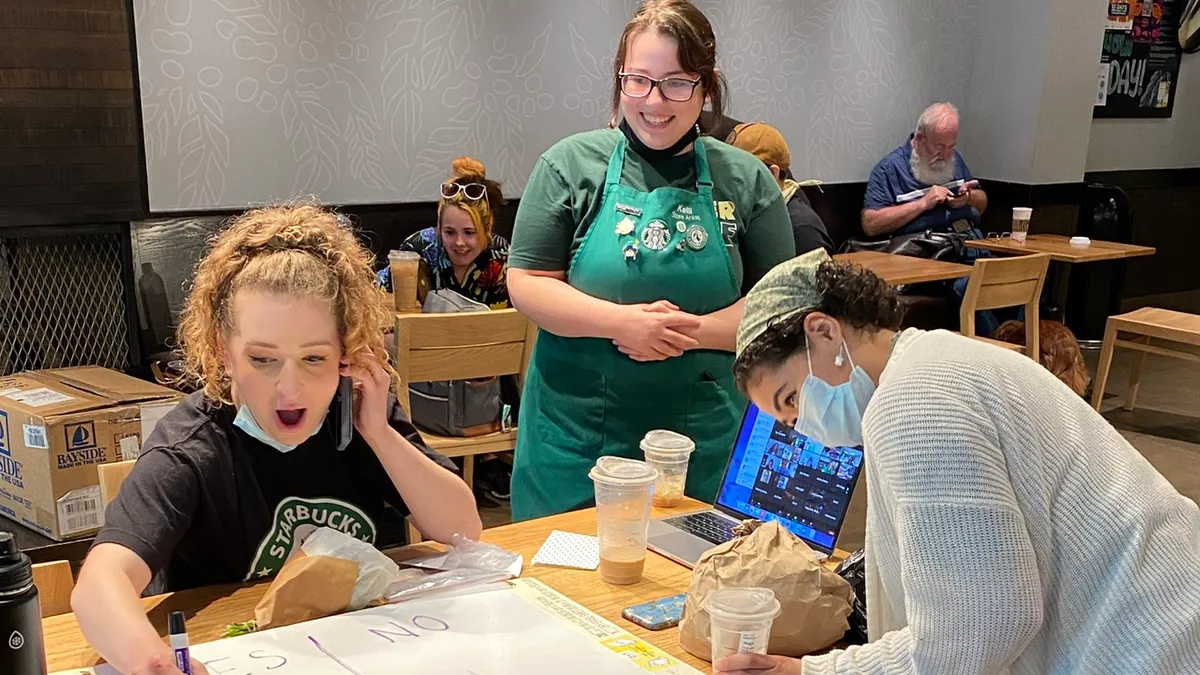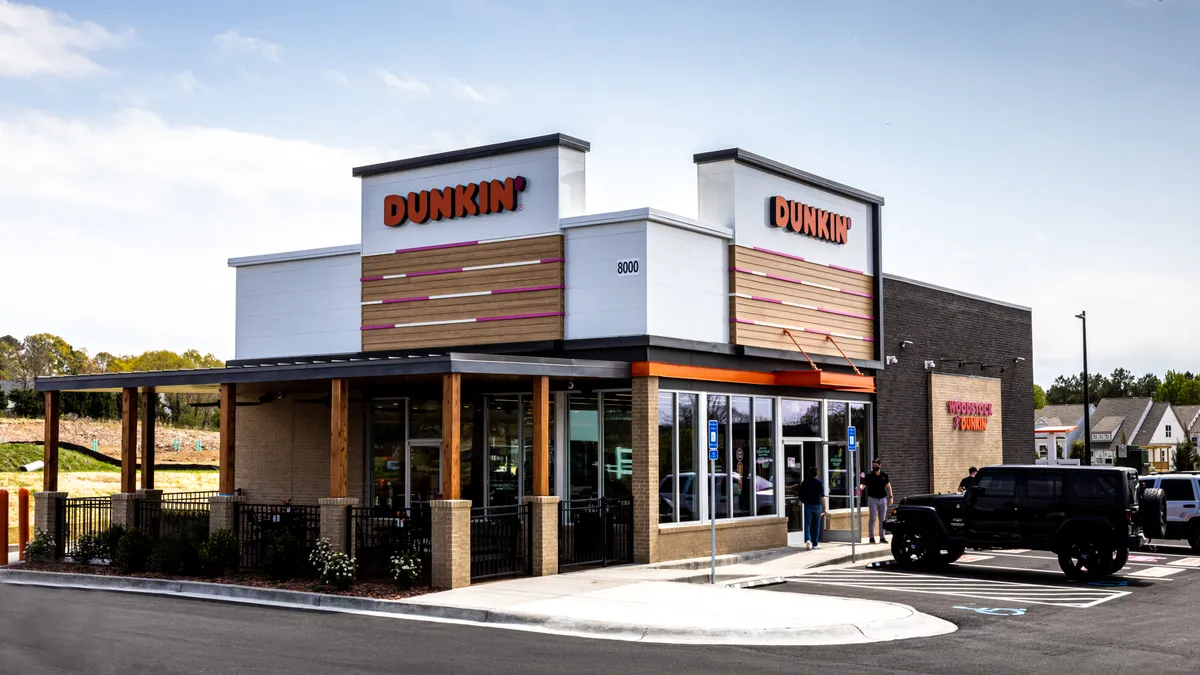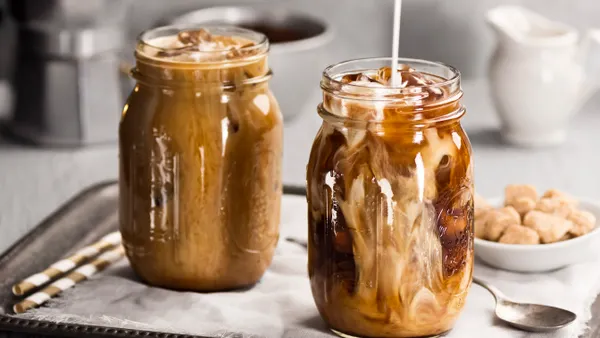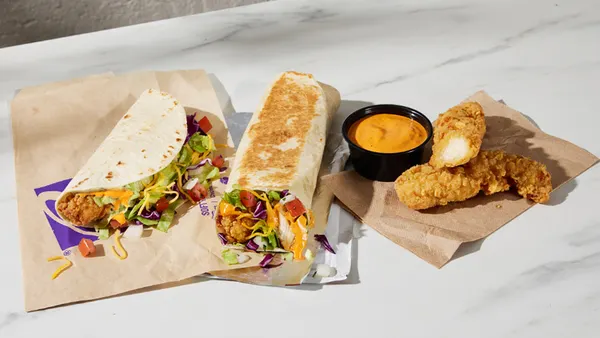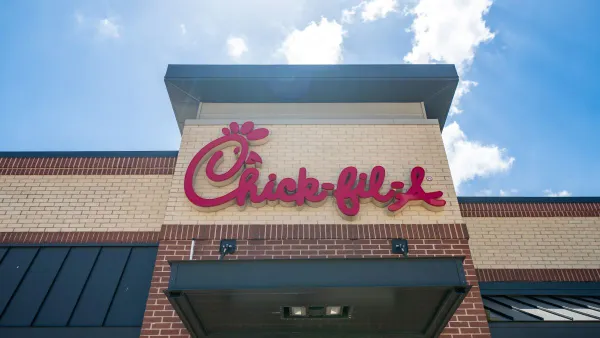Dive Brief:
- Burger King announced in a press release a new sandwich for Halloween, which the brand claims can stir up bad dreams. The Nightmare King features a quarter pound of beef, white meat chicken fillet, melted American cheese, bacon, mayonnaise and onions on a glazed — and noticeably green — sesame seed bun.
- To prove that the sandwich causes nightmares, Burger King partnered with the Paramount Trials and Florida Sleep & Neuro Diagnostic Services and branding firm Goldforest on a study conducted over 10 nights. For the study, 100 participants ate a Nightmare King before going to bed. Measurements of heart rate, brain activity and breath revealed that the occurrence of nightmares increased by 3.5 times after consumption.
- According to researchers, the combination of proteins and cheese in the Nightmare King interrupted REM cycles, which is when most people dream. Burger King captured some of the research in found footage-style video. The Nightmare King will be available at select restaurants for a limited time starting on Oct. 22 and via the courier service Postmates.
Dive Insight:
Burger King is building off prior successes with novelty menu items to draw interest around the Halloween season. The brand drummed up a good deal of buzz for the holiday three years ago with the creation a Whopper with a striking black bun, for example.
Last year, it also handed out free Whoppers to customers who visited restaurant locations dressed as clowns. The stunt was backed by data, inspired by Google Trends showing clowns were one of the top costume ideas in 2017. Not coincidentally, the horror movie "It," whose antagonist is a killer clown, was a runaway box office success last fall, and the Burger King promotion doubled as a spoof on chief rival McDonald's mascot.
The current Nightmare King campaign also tries to tie into data and pop culture, leveraging found footage-style video to document the ostensible research the brand conducted to inform the menu offering. Found footage has been popularized in the mainstream by horror movies like "The Blair Witch Project" in the late '90s and then again with the surprise success of the low-budget "Paranormal Activity" franchise a decade ago.
As for the sandwich itself, the green bun and apparent link to causing intense bad dreams — participants in the "clinical sleep study" reported seeing people transformed into snakes and being attacked by aliens — could draw the interest of more curious or courageous consumers. Along with the Nightmare King, Burger King recently unveiled the Frozen Fanta Scary Black Cherry for Halloween.
The tie-up with Postmates additionally signals how Burger King is potentially leveraging the showy seasonal promotion as a way to drive people to its mobile and digital ordering business. Fast-food marketers are increasingly competing for the attentions of more health-concious millennials and also Gen Zers, who are often viewed as being attached to their smartphones. While millennials have frequently shunned fast-food, Gen Z has shown a fondness for these brands and is 20% more likely to visit fast-food restaurants than older generations, per a recent study from Foursquare and the agency Carat.
Quirky marketing stunts have become another key part of Burger King and frequent collaborator David Miami's bid to stand out in a crowded QSR category. The brand last month poked fun at marketers obsessed with artificial intelligence by pretending to swap out its traditional agency of record, or AOR, with an "agency of robots." Creative "produced" by the robot team was unintelligible.




